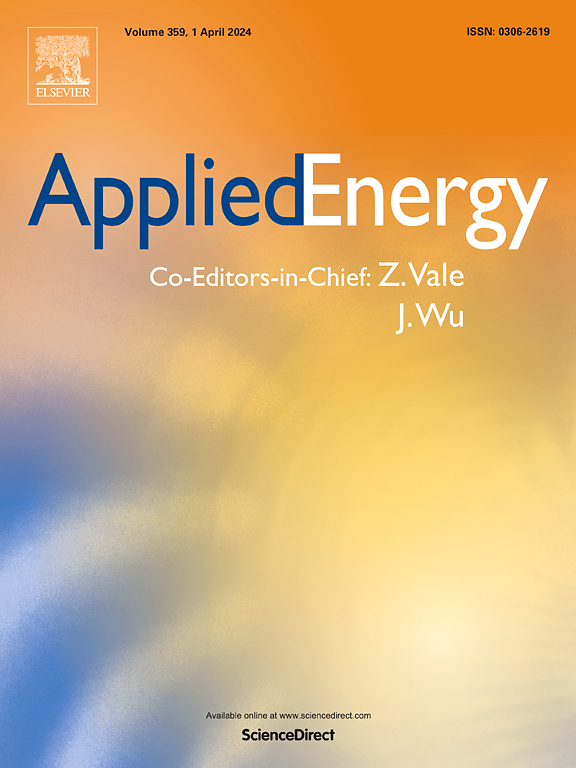双燃料策略、纳米添加剂和可再生能源压缩点火发动机排放控制的综合综述
IF 11
1区 工程技术
Q1 ENERGY & FUELS
引用次数: 0
摘要
本综述旨在通过综合2020年至2025年的高影响研究,建立对压缩点火发动机替代燃料性能和燃烧策略的综合理解。主要发现包括氨氢混合物的热效率提高高达42%,椭圆喷射器生物柴油的热效率提高15%,甲醇双燃料系统的热效率提高12%。生物柴油减少了30 - 40%的一氧化碳和颗粒物排放,但增加了10 - 15%的氮氧化物。氢气和氨的二氧化碳排放量接近于零,但需要EGR和注水来控制高NOx。醇类可以改善燃烧均匀性,但由于点火延迟时间长,需要先导喷射。Al₂O₃和CeO₂等纳米添加剂可以减少20%以上的CO和HC,并改善雾化效果,提高了刹车热效率。通过整合燃烧策略、喷雾特性和排放权衡,本综述开发了一个统一的框架,用于优化CI发动机的替代燃料。其新颖之处在于其综合合成了多种燃料混合、纳米添加剂的应用和先进的燃烧技术(如RCCI和LTC),而之前的研究仅对这些技术进行了单独研究。一项全面的文献检查显示,迄今为止,没有一篇综述同时合成了双燃料策略、纳米添加剂应用和先进的燃烧技术,特别是针对由多种可再生能源驱动的压缩点火发动机。现有的评估通常孤立于单个燃料或技术,缺乏本文开发的综合框架。该研究通过提供统一的基准框架来指导未来低排放、高效CI发动机系统的设计和实施,填补了一个关键的空白。本文章由计算机程序翻译,如有差异,请以英文原文为准。
An integrative review of dual-fuel strategies, Nano-additives, and emission control in compression ignition engines fueled by renewable energy sources
This review aims to establish an integrated understanding of alternative fuel performance and combustion strategies in compression ignition engines by synthesizing high-impact studies from 2020 to 2025. Key findings include thermal efficiency gains of up to 42 % for ammonia‑hydrogen blends, 15 % for biodiesel with elliptical injectors, and 12 % for methanol dual-fuel systems. Biodiesel reduces CO and PM emissions by 30–40 % but raises NOx by 10–15 %. Hydrogen and ammonia yield near-zero CO₂ emissions yet require EGR and water injection to control high NOx. Alcohols improve combustion homogeneity but need pilot injection due to long ignition delays. Nano-additives like Al₂O₃ and CeO₂ reduce CO and HC by over 20 %, improve atomization, and boost brake thermal efficiency. By integrating combustion strategies, spray characteristics, and emission trade-offs, this review develops a unified framework for optimizing alternative fuels in CI engines. The novelty lies in its comprehensive synthesis of multi-fuel blending, nano-additive application, and advanced combustion technologies (e.g., RCCI and LTC), which prior reviews have addressed only in isolation. A comprehensive literature check revealed that, to date, no single review has concurrently synthesized dual-fuel strategies, nano-additive applications, and advanced combustion technologies specifically for compression ignition engines fueled by multiple renewable sources, as conducted in the present work. Existing reviews typically isolate individual fuels or technologies, lacking the integrated framework developed here. This study fills a crucial gap by offering a unified benchmark framework to guide future design and implementation of low-emission, high-efficiency CI engine systems.
求助全文
通过发布文献求助,成功后即可免费获取论文全文。
去求助
来源期刊

Applied Energy
工程技术-工程:化工
CiteScore
21.20
自引率
10.70%
发文量
1830
审稿时长
41 days
期刊介绍:
Applied Energy serves as a platform for sharing innovations, research, development, and demonstrations in energy conversion, conservation, and sustainable energy systems. The journal covers topics such as optimal energy resource use, environmental pollutant mitigation, and energy process analysis. It welcomes original papers, review articles, technical notes, and letters to the editor. Authors are encouraged to submit manuscripts that bridge the gap between research, development, and implementation. The journal addresses a wide spectrum of topics, including fossil and renewable energy technologies, energy economics, and environmental impacts. Applied Energy also explores modeling and forecasting, conservation strategies, and the social and economic implications of energy policies, including climate change mitigation. It is complemented by the open-access journal Advances in Applied Energy.
 求助内容:
求助内容: 应助结果提醒方式:
应助结果提醒方式:


